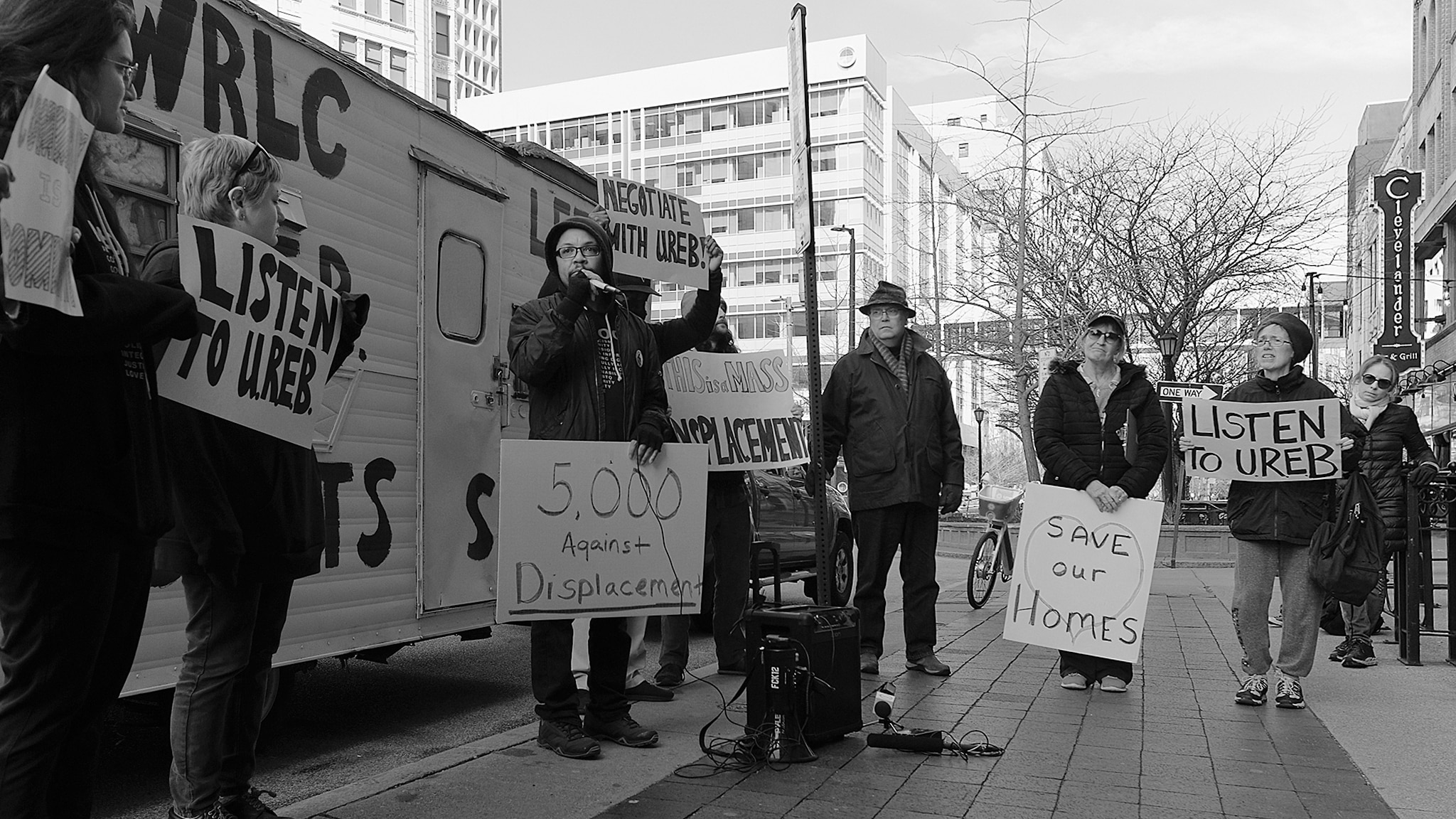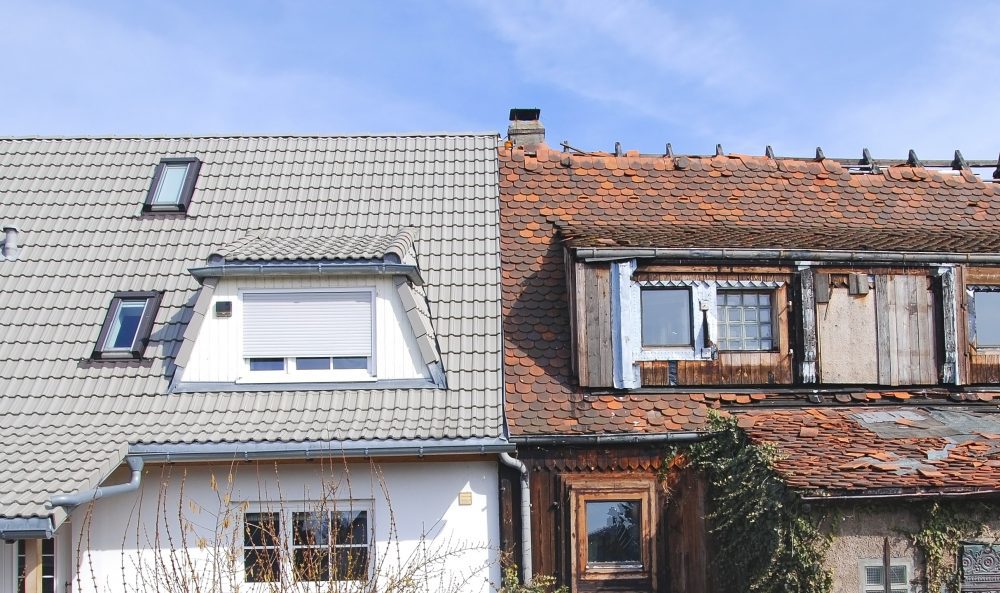Crain’s Chicago Business recently published a piece on the high cost of building affordable housing, especially using the Low-Income Housing Tax Credit. This is the kind of article that tends to make many nonprofit affordable housing developers cringe and get defensive, while a few champions of cost containment in the industry cheer.
My reaction is much more mixed, because I think there’s one thing that these reports tend to have in common—they conflate things that add cost in the short term but save cost in the long view with things that add cost but have little long-haul benefit.
As a society we are pretty terrible about looking at the bigger picture and the longer term. In the affordable housing field, we have been trying to some degree to get better about that. For example, on the big-picture front, Housing First advocates have put together a lot of research reminding us that paying for housing is cheaper than the societal costs of homelessness. And on the long-term front, shared-equity homeownership and permanent affordability advocates have reminded us of the eventual consequences of short-term or temporary affordability measures that evaporate in less time than it takes to raise a child, as opposed to a single subsidy that can keep homes affordable for the indefinite future.
What happens if we look at the list of arguments Crain’s gives about soaring costs, and think about the big picture? I see three examples where there is some legitimate debate, though it can go too far, and two where complaints are just short sighted.
Argument: LIHTC Makes Projects More Expensive
There is bureaucracy inherent in funding the construction or rehabilitation of affordable housing through a complicated tax credit product instead of directly. The time to assemble multiple financial sources and align their different requirements, and gather a number of players—who all need their cut—adds a significant amount to the cost of projects, with no long-term benefit. This is essentially a tax we as a country pay for not having the political will to fund affordable housing construction in a more direct way that doesn’t throw off benefits to big corporate players. The conversation here is entirely about whether we can fix that, or at least lessen our reliance on it.
Argument: Too Much Is Being Spent on Aesthetics
The pendulum swings on architectural finesse because there are good arguments on either side. No one should live somewhere that looks like a jail (inside or out), and neighbors will fight ugly buildings tooth and nail, which increases their timeline and therefore cost. Institutional buildings that look like no one cares can stigmatize residents and neighborhoods, which isn’t a good long-term investment, though its effects are hard to quantify. However, affordable housing is certainly not the place to pour money into grand architectural statements, and interior luxury touches that don’t add functionality or durability is certainly a poor use of funds when so many need homes. I honestly am suspicious of the claim that very many luxury items and architectural excesses are making it into affordable housing developments, but exactly where to draw the line has been being debated for decades—a point-counterpoint on the subject was literally in the editing process when I first came to Shelterforce as an intern in 1995.
Argument: We’re Asking Housing to Solve Other Problems
A common complaint is that, as many people in the industry have said to me, “affordable housing is expected to solve all the ills of the world.” On-site service provision, workforce development, gyms, or computer access rooms, for example, are often given additional points in the application for tax credits, and with competition for those credits as stiff as it is, it often becomes essentially a requirement to include several of these amenities.
Is it worth it? That depends on context. “There’s like a tremendous amount of public goods packed into some of these buildings that are only available for the private use of those residents,” says Tom DeSimone of Genesis LA, a community development financial institution in Los Angeles. “I think there needs to be an assessment of like, does every building need these on site? Or are some of these goods and services actually provided in the neighborhood, our local libraries, or senior centers, or health care clinics? I’ve had a lot of service providers [working in permanent supportive housing] say, ‘We don’t deliver half the services on site anyway, we transport them, because our clients have all these different needs.’”
On the other hand, if a LIHTC development is not located in a dense service- and transit-rich neighborhood, it could be of significant big-picture value to have some of these items on site for people who may not drive or have easy access to child care—this could support health, employment, and housing stability. This seems like a question for context, but it certainly should be driven by context, and need, and supported by other sectors, not be part of an escalation to qualify for tax credits.
Argument: Accessibility and Sustainability Are Luxuries
Green building and accessibility come up constantly as supposed examples of liberal do-gooding that make housing expensive. This demonstrates short-term thinking. These things are not frills, and the cost of us not doing them now will only make more costs in the future.
If you thought we had an affordable housing shortage, wait until you see our accessible, affordable housing shortage, especially as our population ages and develops increasing rates of disability. The upfront cost to the public coffers of universal design saves us the costs of retrofitting homes because they weren’t made accessible in the first place, of paying for nursing homes because there’s no accessible housing available, of increased homelessness, increased injuries, and people not able to participate because they are stuck in an inaccessible home.
Similarly, buildings that are not resilient, that weren’t built with climate change in mind, are going to succumb to weather and temperature disasters, wasting our investment in them entirely and setting housing supply back. Those that are lucky enough to escape but are not green in terms of energy use and indoor air quality will face issues with skyrocketing utilities charges and resident health problems. These conditions will require remediation and retrofitting to fix—again with severe ripple effects on the public coffers.
Is it possible that some buildings are going overboard with green measures that bring little benefit? Certainly. Should affordable housing attempt to carry the load of reducing carbon emissions on its own, especially uncompensated from other sectors? No. Should housing developers get financial support to accommodate increased upfront costs if green building standards are mandated? Yes.
But saying we should just not make affordable housing green and resilient in order to build more of it is a terrible plan that will only result in ballooning costs for recovery and remediation (not very far) down the road.
Argument: Nonprofits Are Looking Too Far Ahead
Not as often picked on by those who like to skewer expensive LIHTC developments—but eloquently described by Joy Arguete of Bickerdike Redevelopment in the Crain’s article—the necessity for durable buildings and financial reserves also adds upfront cost to nonprofit developments. These buildings are not making bank on their rents and then walking away. I’ve been in multiple luxury buildings built supposedly for less cost than LIHTC developments. They have expensive surface features over a clearly flimsy (and often poorly designed) core. Those developers can recoup their investments in high rents and then sell before the thing falls apart. Then the cycle can start again, with a renovation to shore it up, financed by a new round of luxury rents.
Affordable developments can’t afford to do that. Developers need to make these buildings last as long as possible, and plan for decades of maintenance and repair. Even if they invest in much more durable construction, they can’t even assume that the rents they can charge will be enough to maintain the asset long term, and sometimes build in reserves up front as well. Higher per-unit costs upon construction are keeping those buildings from contributing to an expensive affordable housing preservation crisis in the future. Right now, there are affordable housing developments that were built or rehabbed under aggressive cost containment measures that are struggling to provide safe, decent accommodations for their residents, and will require infusions of resources to save them. However, we won’t go back and add those infusions to the original per-unit cost of construction. We should. In the sustainability world this is called lifecycle accounting.
I don’t have a specific formula for exactly what affordable housing should cost and how it should be designed—that’s a matter of public policy and priorities. But the conversation is severely muddied when we lump all the categories above together and fail to tease out unnecessary costs from investments in our future. Instead of saying “oh my, that’s so much money!” we should ask what we are—and are not—getting for that public investment over the long haul.





Permanent affordabilty is worth the investmentof public monies!
Andy, I agree. Permanent affordability is far cheaper in the long run and may or may not be more affordable in the short run depending on how it’s paid for. It’s less expensive and easier to keep permanently affordable if the government directly subsidizes housing rather than convoluted tax credits, but tax credits are what we have. There is some talk of allowing direct pay for LIHTC similar to the option for energy tax credits where co-ops, non-profits and governments can file tax returns and get refunds for the tax credits. That would allow huge savings and permanent affordability.
tax credit new construction in Ohio costs more than non-luxury market rate housing for several reasons, some of which are described in this article. the additional amenities and the green certifications probably add a few thousand per unit, but I don’t think that is the biggest issue. What I see are: 1) we’re paying the HFA about $3500/unit in fees and another several thousand in operating reserves instead of the developer simply being on the hook for losses; 2) we’re paying a truly exorbitant amount to lawyers—due to the complexity of the capital stack for many transactions, we go through months of closing calls with 30+ invitees and there may be $250,000 pf legal bills; 3) here’s the biggest reason: we almost never build the same project twice. There’s a for-profit builder here in central Ohio that builds endless apartment complexes of 24-unit walk up buildings, typically 9-12 buildings plus a clubhouse. they have 2 designs and repeat them over and over. Sub-contractors know exactly how to build them and what it costs. The efficiency dwarfs what we niche players can deliver. If the HFA removed the scoring for locations and design of housing required, I’m sure the industry could deliver the product more efficiently. Stop changing the rules every year!
I read the Crain’s Chicago Business set of articles, and appreciate Shelterforce’s weighing in. I agree with you that high quality, accessible, energy-efficient housing is not a luxury. I disagree, however, that LIHTC has long-term benefit that provides its own short-term justification. Between an expiring affordability term (15 years is the blink of an eye), exorbitant soft costs, and the inability to use LIHTC funds for supportive services, it is a shame that LIHTC — which is, at bottom, an IRS tax shelter program, not a people shelter program — is our national response to the housing crisis. If we believe in a right to housing, we should be building it ourselves — and by that, I mean government. Let’s get back into the public housing business, and do it right this time.
That was not one of the cases where I was arguing long-term benefits!
Please do not cut this program off I need this program I only get like $953 a month I am disabled cannot work.
Hi Carolyn — we absolutely need to keep programs that make housing affordable to folks on disability!! And in fact increase the amount of that housing dramatically. LIHTC by itself does not do that, however. It targets somewhat higher incomes. One big question is how to help it better reach the folks who need it most.
A state bank or affordable housing infrastructure fund that creates cheaper, easier accessible capital with strings attached to ensure permanent affordability needs to be developed to replace the current morass.
Per the LIHTC is too expensive: That is only part of the problem. The LIHTC has split the nonprofit community between transactionalists and non-transactionalists. The non-transactionalists have or are open to broad advocacy agendas for their communities and innovation. The transactionalists, with their developer and banker-buddy partners just want to do deals, that are often vital to their staying in business. Their insatiable need for subsidy has eaten up available funds and thwarted non-LIHTC approaches to meeting a variety of housing needs. They don’t challenge power because they rely on power to do their work.
Per aesthetics: Let us not forget the lesson of public housing. The original sin of public housing that in return for getting any sort of program advocates agreed to let the enemies of public housing set the terms in regard to cost, design and location. Units were shoddy, poorly designed, etc. because that was the only way housing could be produced within the cost constraints set by public housing opponents. If good design can’t be incorporated, then let’s not build and be subsequently blamed for bad design; just continue the fight for decent housing policy.
Daniel – where do local housing authorities that use LIHTC to build affordable housing fit into your analysis?